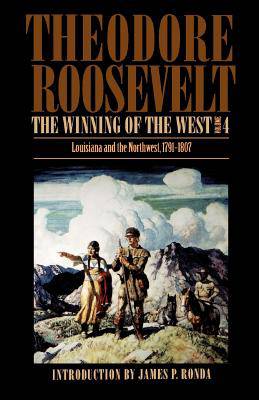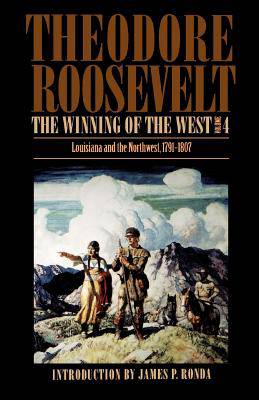
- Afhalen na 1 uur in een winkel met voorraad
- Gratis thuislevering in België vanaf € 30
- Ruim aanbod met 7 miljoen producten
- Afhalen na 1 uur in een winkel met voorraad
- Gratis thuislevering in België vanaf € 30
- Ruim aanbod met 7 miljoen producten
Zoeken
The Winning of the West, Volume 4
Louisiana and the Northwest, 1791-1807
Theodore Roosevelt
Paperback | Engels
€ 39,95
+ 79 punten
Omschrijving
After political defeats and the loss of half his capital in a ranching venture in North Dakota, Theodore Roosevelt began writing his ambitious history of the conquest of the American West in 1888. He projected a sweeping drama, well documented and filled with Americans fighting Indian confederacies north and south while dealing with the machinations of the British, French, and Spanish and their sympathizers. Roosevelt wanted to show how backwoodsmen such as Daniel Boone and Simon Kenton, followed by hardy pioneer settlers, gave the United States eventual claim to land west of the Alleghanies. Heroism and treachery among both the whites and the Indians can be seen in his rapidly shifting story of a people on the move. By force and by treaty the new nation was established in the East, and when the explorers and settlers pushed against the Mississippi, everything west of the river was considered part of that nation. This final volume spans the period that saw Kentucky, Tennessee, and Ohio become states; Louisiana, Indiana, and Mississippi, territories. The successful campaigns of General Anthony Wayne and others intimidated the Indians into the first peace the border had known in fifty years. The treaties of John Jay and Thomas Pinckney firmed American boundaries and stopped the intrigues of the British and Spanish. As in the other volumes, Roosevelt ties many-sided events into an exciting narrative. He describes in detail the Lewis and Clark Expedition to the Pacific following the Louisiana Purchase.
Specificaties
Betrokkenen
- Auteur(s):
- Uitgeverij:
Inhoud
- Aantal bladzijden:
- 363
- Taal:
- Engels
Eigenschappen
- Productcode (EAN):
- 9780803289574
- Verschijningsdatum:
- 1/05/1995
- Uitvoering:
- Paperback
- Formaat:
- Trade paperback (VS)
- Afmetingen:
- 142 mm x 217 mm
- Gewicht:
- 489 g

Alleen bij Standaard Boekhandel
+ 79 punten op je klantenkaart van Standaard Boekhandel
Beoordelingen
We publiceren alleen reviews die voldoen aan de voorwaarden voor reviews. Bekijk onze voorwaarden voor reviews.








